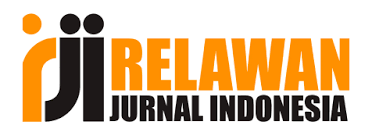IMMUNOLOGICAL INDICATORS CHILDREN WITH HELMINTHIC INVASION
Abstract
A detailed analysis of the main clinical and laboratory parameters in groups of children suffering from allergic rhinitis (AR) with concomitant hymenolepiasis during antiallergic, antiparasitic and complex therapy is given. Patients with AR with hymenolepidoses were divided into three groups: 21 patients received antiallergic therapy, 22 patients received antiparasitic therapy, and 24 patients underwent complex therapy. The maximum clinical effect was achieved by us with the use of complex treatment, which included antiallergic and antiparasitic therapy. The dynamics of immunological parameters after treatment of patients with AR with hymenolepidoses only with antiallergic or antiparasitic drugs shows that, despite the positive result, it is insufficient and does not normalize immunological parameters. Complex antiallergic and antiparasitic treatment has a pronounced immunological effect, activates the severity of the immune response, switches the nature of the immune response to suppressor, and thereby contributes to a faster relief of the allergic process in the body
References
2. Khamidova, N. K., Mirzoeva, M. R., & Narzullaev, N. U. (2021). Clinical and Immunological Study of the Effect of Different types of Therapy on the Course of Allergic Rhinitis in Children with Hymenolepiasis. Annals of the Romanian Society for Cell Biology, 1900-1908.
3. Садыкова, Г. К., & Азимова, Н. М. (2013). Клинико-неврологические и иммунологические показатели у детей с гельминтной и протозойной инвазиями. Здравоохранение Кыргызстана, (3), 91-94.
4. Kosimovna, K. N. (2023). CLINICAL, NEUROLOGICAL AND IMMUNOLOGICAL PARAMETERS IN CHILDREN WITH HYMENOLEPIDOSIS AND PROTOZOAN INVASIONS. Galaxy International Interdisciplinary Research Journal, 11(4), 398-403.
5. Navruzova, U. O., Khamidova, N. Q., & Yusupov, S. H. (2019). A. Featurus of Periodontitis in Metabolo c Disorders. European journal of pharmaceutical and medical research, 3, 108-113.
6. Mirzoeva, M. R., & Khamidova, N. K. (2020). Clinical and epidemiological characteristic of hymenolepidosis children. AcademiciaAn International Multidisciplinary Research Journal, 169-173.
7. Мирзоева, М. Р., Нарзуллаев, Н. У., & Хамидова, Н. К. (2020). Клинико-эпидемиологическая характеристика гименилипедоза у детей. Новый день в медицине, (2), 441-443.
8. Oblokulov, A. R., Hamidova, N. Q., & Aslanova, M. R. (2021). Clinical and epidemiological aspects of hymenolepidosis and teniarynchosis in pediatrics. Europe’s Journal of Psychology (EJOP).-11.07, 224-229.
9. Narzullaev, N. U., Mirzoeva, M. R., & Khamidova, N. K. (2022). ANALYSIS OF THE INCIDENCE OF HYMENOLEPIASIS AMONG PARASITOSES IN OUTPATIENTS AND INPATIENTS. INTERNATIONAL JOURNAL OF SOCIAL SCIENCE & INTERDISCIPLINARY RESEARCH ISSN: 2277-3630 Impact factor: 7.429, 11, 8-9.
10. Khamidova, N. K., Mirzoeva, M. R., & Narzullaev, N. U. (2021). Clinical and Immunological Study of the Effect of Different types of Therapy on the Course of Allergic Rhinitis in Children with Hymenolepiasis. Annals of the Romanian Society for Cell Biology, 1900-1908.
11. Азимова Н.М. Клинико-иммунологические показа¬тели гименолепидоза и лямблиоза у детей с интоксикацией ЦНС // Сборник тезисов 4-го съезда неврологов Узбекиста¬на. - Ташкент, 2012. - С. 167.
12. Поляков В.Е.. Лысенко А.Я.. Константинова Т.Н., Авдюхина Т.И. Гименолепидозы у детей и подростков // Ме¬дицинская помощь. - 2015. - № 5. - С. 43-48.
13. Oblokulov A. R., Elmuradova A. A., Khadieva D. I., Pondina A. I. (2020) Improved methods of treatment of patients with chronic giardiasis using "Diform" / / New Day in Medicine. 4(32) - pp. 560-562.
14. Хамидова Н.К. Клинико-эпидемиологическая характеристика гименолипедоза у детей // Новый день медицине. Ташкент 2020г.с.441-443.
15. Oblokulov A. R., Niyazov G. E., Oblokulov A. A., Narziev B. I. (1999) Features of the course of giardiasis in adults / / Infection, immunity and pharmacology. -1999. - p. 151-156.
16. Kilincel O., Ozturk C.E., Gun E., Uzun H. A rare case of Hymenolepis diminuta infection in a small child // Mikrobi- yol Bul. - 2015 Jan. - № 49(1). - Р 135-8.
17. Хамидова Н.K. Клинико-иммунологические показатели гименолепидоза саллергическом ринитом у детей в зависимости от вида терапии // Central Asian Journal Of Medical and Natural Sciences.-11.11.2021.-Р. 331-333.
18. Khamidova N.K. (2021). Clinical and Immunological Study of the Effect of Different types of Therapy on the Course of Allergic Rhinitis in Children with Hymenolepiasis. Annals of the Romanian Society for Cell Biology, 1900–1908.
19. Lin R.J., Chen C.Y., Lu C.M., Ma Y.H. Anthelmintic constituents from ginger (Zingiber officinale) against Hyme¬nolepis nana // Acta Trop. - 2014 Dec. - № 140. - Р. 50-60.
20. Mirzoeva M.R., & Khamidova N.K. (2020). Clinical and epidemiological characteristic of hymenolepidosis children // Academicia An International Multidisciplinary Research Journal. – 2020. – P. 169-173.
21. Аслонова М.Р. Возникновение Случаев Гиповитаминоза Из-За Гельминтозов // CENTRAL ASIAN JOURNAL OF MEDICAL AND NATURAL SCIENCES. – 2021.- С. 46-50.
22. Khamidova N.K. Сlinical and immunological study of the effect of various types of therapy on the course of allergic rhinitis in children with hymenolepiasis // WORLD MEDICINE JOURNAL . -2021. -№ 1(1).- P. 387-391.
















